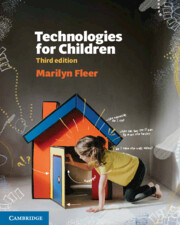Refine search
Actions for selected content:
36809 results in Cambridge Textbooks
Part II - Reasoning and Planning with Certainty
-
- Book:
- Artificial Intelligence
- Published online:
- 14 August 2023
- Print publication:
- 13 July 2023, pp 77-258
-
- Chapter
- Export citation
1 - The Basics of the Convention System
-
- Book:
- General Principles of the European Convention on Human Rights
- Published online:
- 03 June 2023
- Print publication:
- 13 July 2023, pp 1-34
-
- Chapter
- Export citation
Part VI - The Big Picture
-
- Book:
- Artificial Intelligence
- Published online:
- 14 August 2023
- Print publication:
- 13 July 2023, pp 765-796
-
- Chapter
- Export citation
Index
-
- Book:
- General Principles of the European Convention on Human Rights
- Published online:
- 03 June 2023
- Print publication:
- 13 July 2023, pp 377-392
-
- Chapter
- Export citation
Preface
-
- Book:
- Artificial Intelligence
- Published online:
- 14 August 2023
- Print publication:
- 13 July 2023, pp xxi-xxvi
-
- Chapter
- Export citation
Appendix A - Mathematical Preliminaries and Notation
-
- Book:
- Artificial Intelligence
- Published online:
- 14 August 2023
- Print publication:
- 13 July 2023, pp 797-802
-
- Chapter
- Export citation
Chapter 13 - Reinforcement Learning
- from Part IV - Planning and Acting with Uncertainty
-
- Book:
- Artificial Intelligence
- Published online:
- 14 August 2023
- Print publication:
- 13 July 2023, pp 583-608
-
- Chapter
- Export citation
Appendices
-
- Book:
- Artificial Intelligence
- Published online:
- 14 August 2023
- Print publication:
- 13 July 2023, pp 797-806
-
- Chapter
- Export citation
3 - The Court’s Overall Argumentative Approach – Mediating Between the Abstract and the Concrete
-
- Book:
- General Principles of the European Convention on Human Rights
- Published online:
- 03 June 2023
- Print publication:
- 13 July 2023, pp 77-99
-
- Chapter
- Export citation
Chapter 5 - Propositions and Inference
- from Part II - Reasoning and Planning with Certainty
-
- Book:
- Artificial Intelligence
- Published online:
- 14 August 2023
- Print publication:
- 13 July 2023, pp 177-230
-
- Chapter
- Export citation
Copyright page
-
- Book:
- Artificial Intelligence
- Published online:
- 14 August 2023
- Print publication:
- 13 July 2023, pp vi-vi
-
- Chapter
- Export citation
Copyright page
-
- Book:
- General Principles of the European Convention on Human Rights
- Published online:
- 03 June 2023
- Print publication:
- 13 July 2023, pp iv-iv
-
- Chapter
- Export citation
5 - Methods of Convention Interpretation
-
- Book:
- General Principles of the European Convention on Human Rights
- Published online:
- 03 June 2023
- Print publication:
- 13 July 2023, pp 140-173
-
- Chapter
- Export citation
Appendix B - Mapping to Open-Source Packages
-
- Book:
- Artificial Intelligence
- Published online:
- 14 August 2023
- Print publication:
- 13 July 2023, pp 803-806
-
- Chapter
- Export citation
Chapter 7 - Supervised Machine Learning
- from Part III - Learning and Reasoning with Uncertainty
-
- Book:
- Artificial Intelligence
- Published online:
- 14 August 2023
- Print publication:
- 13 July 2023, pp 261-326
-
- Chapter
- Export citation
Dedication
-
- Book:
- Artificial Intelligence
- Published online:
- 14 August 2023
- Print publication:
- 13 July 2023, pp vii-viii
-
- Chapter
- Export citation
Contents
-
- Book:
- General Principles of the European Convention on Human Rights
- Published online:
- 03 June 2023
- Print publication:
- 13 July 2023, pp v-viii
-
- Chapter
- Export citation
Chapter 6 - Deterministic Planning
- from Part II - Reasoning and Planning with Certainty
-
- Book:
- Artificial Intelligence
- Published online:
- 14 August 2023
- Print publication:
- 13 July 2023, pp 231-258
-
- Chapter
- Export citation
Part V - Representing Individuals and Relations
-
- Book:
- Artificial Intelligence
- Published online:
- 14 August 2023
- Print publication:
- 13 July 2023, pp 643-764
-
- Chapter
- Export citation

Technologies for Children
-
- Published online:
- 11 July 2023
- Print publication:
- 10 July 2023
-
- Textbook
- Export citation
